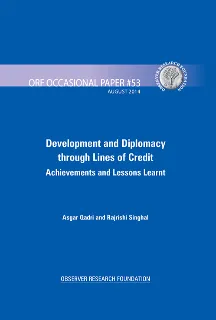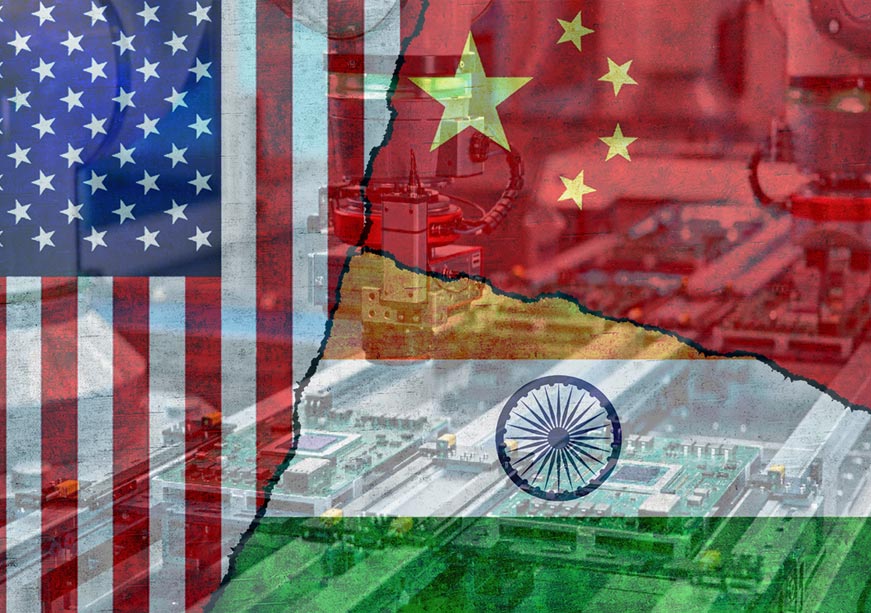In 2014, Lines of Credit (LOCs) will complete a decade as one of India’s central instruments in its Development Cooperation Programme. The instrument has not only reshaped India’s position as an emerging non-DAC (Development Assistance Committee) donor but also helped the country leverage its strategic and economic investments overseas. Currently, India’s development partnership through Lines of Credit extends to 75 countries, covering the Asian, African, and Latin American regions. According to the latest estimates from Export Import Bank of India (Exim Bank), there are 187 operative Lines of Credit that have been extended to countries across these regions, amounting to a total of $10.21 billion.
This represents a remarkable shift from the days when India’s development assistance comprised largely of government-to-government loans. Moreover, it marks a shift in the country’s foreign policy that now considers development partnership as an integral component of international politics.
Since they were first launched in 2004, Lines of Credit have been instrumental in forging India’s development partnership with the African continent. According to the Exim Bank, 133 of the 187 LOCs currently in operation have been given to 48 African countries, amounting to a total of US$ 6.28 billion. This has helped elevate India’s diplomatic partnership with African countries at a time when New Delhi is seeking to broaden its geopolitical footprint.
The African countries, on their part, are seeking support to maintain their pace of development through urbanisation and industrialisation. Indian LOC-funded economic growth projects in Africa include, among many others:
(i) Power generation and farm mechanisation projects in Burundi, Lesotho, and Tanzania;
(ii) Power transmission, rural electrification and irrigation projects in Mozambique;
(iii) A cement project in Djibouti;
(iv) Sugar factories and railway lines in Ethiopia; and
(v) A power transmission project in Kenya.
By offering LOCs at concessional rates, India offers an alternative project financing option to African countries while at the same time creating opportunities for India’s public and private sector to enter new markets. Lines of Credit require the bulk of goods and services to be procured from Indian suppliers and thereby generate new markets for lumpy investments for Indian companies. Apart from energy, Indian private sector companies today are investing in a wide- range of sectors across Africa, including telecommunications, agriculture, pharmaceuticals, healthcare, infrastructure, and information technology.
Development cooperation through Lines of Credit has so far been viewed as mutually beneficial and provides a means of project financing without traditional donor conditionalities being attached. There are, however, myriad challenges that impact on the actual gains from this diplomatic and economic engagement for India.
It is therefore pertinent to make an assessment of the institutional mechanism through which LOC development cooperation is conducted, particularly on the following issues:
(i) improving efficiency in processes for demand, supply and implementation of LOCs;
(ii) improving monitoring of project implementation;
(iii) linking LOC outcomes to clear development goals, objectives, outputs and impact on recipient countries; and
(iv) exploring new areas for concessional, development-oriented LOCs that leverage India’s experience and expertise for social development in recipient countries.
Addressing the above matters will help India’s development partnership with the African continent to move forward under the broader principles of South-South Cooperation (SSC) which include strengthening capacities for self-development, implementing principles of country ownership, equality and mutual benefit, and adjusting the development experience of the SSC assistance-provider to meet conditions and priorities in partner countries.
This study analyses India’s development cooperation conducted through the instrument of Lines of Credit. The study focusses on what has been achieved so far, what lessons can be learned from the past, and what should be done to ensure that LOCs help the recipient countries achieve long-term and sustainable development solutions as well as ensure that India’s own political and economic interests are served. For its assessment of the LOC mechanism and impact, the study relies both on primary and secondary resources.
The study builds on field visits to Ethiopia and Mozambique, two major LOC recipient countries, structured interviews with a variety of stakeholders, and utilises secondary case studies from Exim Bank of India, Confederation of Indian Industries, and other scholarly literature on India’s Development Cooperation Programme.





 PREV
PREV

